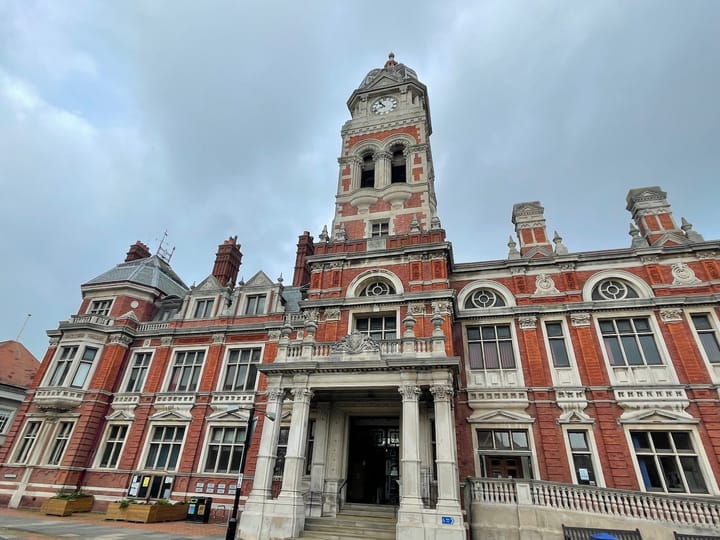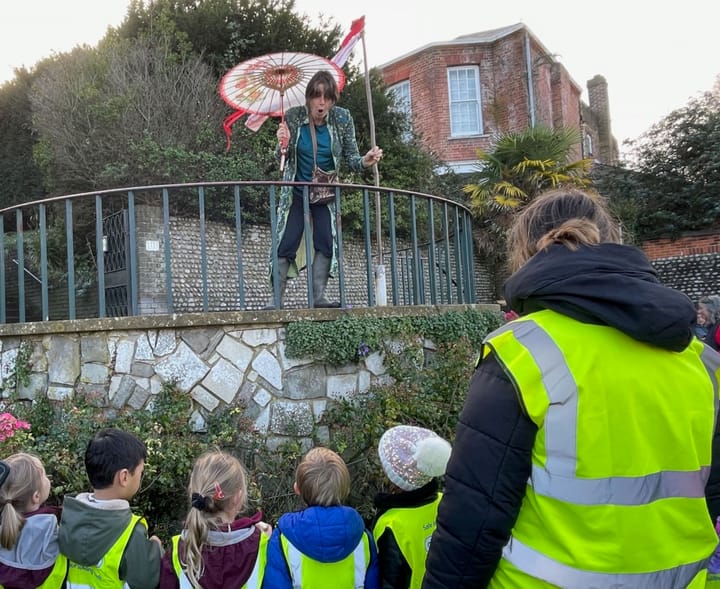Car-free day out: Rye Harbour Nature Reserve
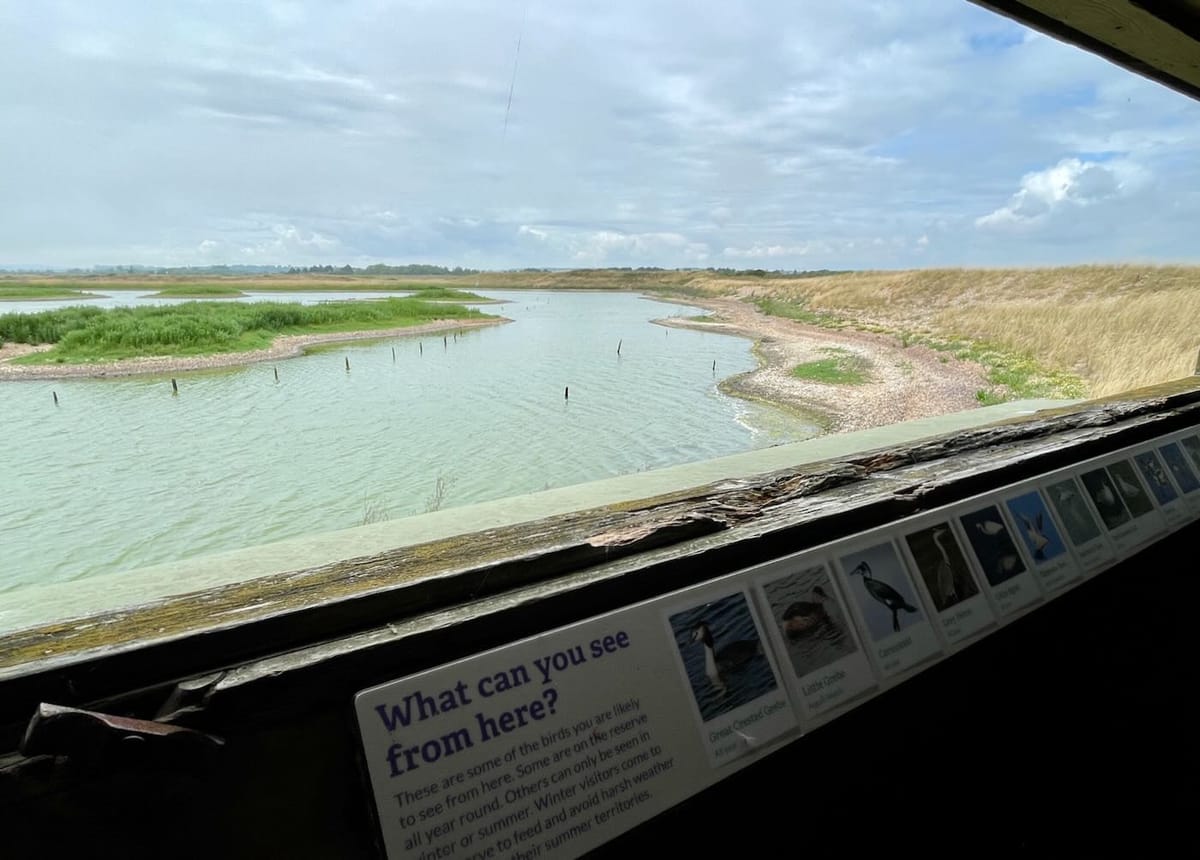
People are encouraged to travel sustainably and leave the car at home. We own a small car but travel by public transport when we can. We travelled from Eastbourne to Rye Harbour by public transport for a grand day out in a natural coastal environment. How did it go?
The Rye Harbour Nature Reserve opened more than 50 years ago on the eastern edge of the East Sussex coast.
The large reserve is home to more than 4,500 species of plants and animals: there are several hides from which to look out on a sweeping view of a liminal landscape, sky and swooping birds.
It’s about 30 miles from Eastbourne and there’s an hourly train to Rye. How hard could this be on public transport?
Getting there by train and bus
We caught the 0950 train, arriving in Rye at 1047. The journey is the great plus point of taking the train: the tracks are right by the beach at several points. On the way there was low cloud and a low tide washing across the sands; on the return, a different view of blue skies, scudding clouds and a high tide washing the pebbles.

The train also cuts across the beautiful Brede Valley dotted with grazing sheep and giving a glimpse of a Kentish oast house before pulling into Rye.
That part is absolutely preferable to sitting in a car through Bexhill, around the back of Hastings and going via the inland route.

A little light transport planning is needed for buses from Rye station to Rye Harbour because they are infrequent and do not connect with the hourly trains.
As you’ve probably noticed, we still seem to be decades away from Scandinavian-style integrated public transport. Which is one of the reasons people walk out their front door and get in the car.
The next number 313 Stagecoach bus to the harbour was at 1120 so we had time for a coffee at the delightful Cafe des Fleurs in the station building, watching coachloads of tour groups pull into the car park.
The single-decker bus (presumably the non-suspension model) left bang on time. This mercifully short ride allows you to feel every single crack and hole on this road at the very edge of East Sussex County Council’s highway empire.
It takes only a few minutes to travel 2.5 miles, through a somewhat unattractive industrial estate alongside the harbour.
The public toilets by the station (a major inconvenience)
One of the challenges of travelling by public transport is that you are at the mercy of public facilities on or near stations.
I used the public toilets opposite the station before we caught the bus. I do not recommend doing this. Go on the train before you arrive, ask at a nearby cafe, find other toilets, bang on a stranger’s door, just go anywhere else. Otherwise, take some wipes and brace yourself.
They are, frankly, appalling. Flickering lights, overflowing bins, blocked toilets, filthy floors and, crucially, no soap. I gave a grateful woman a wet wipe to clean her hands.
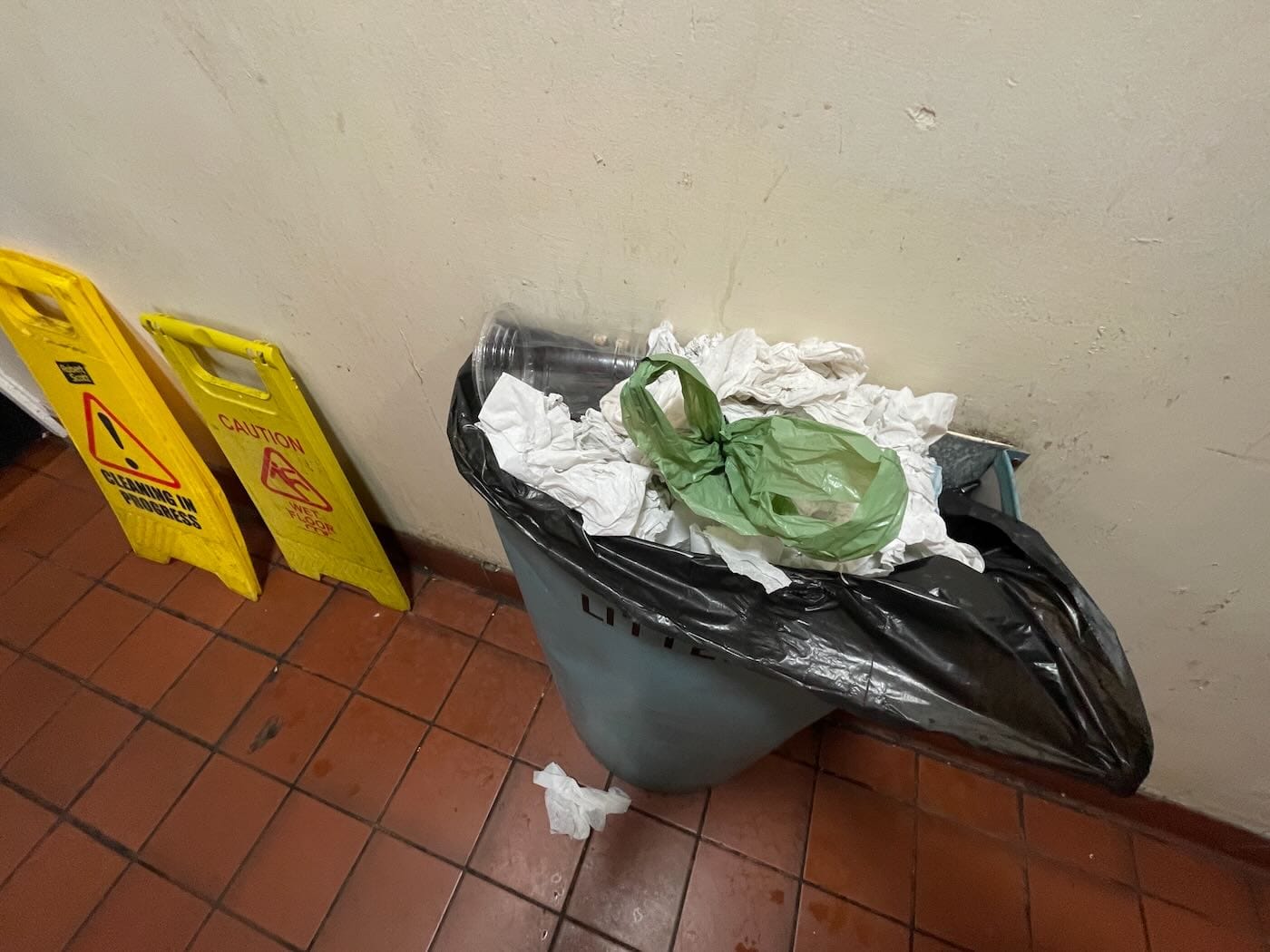
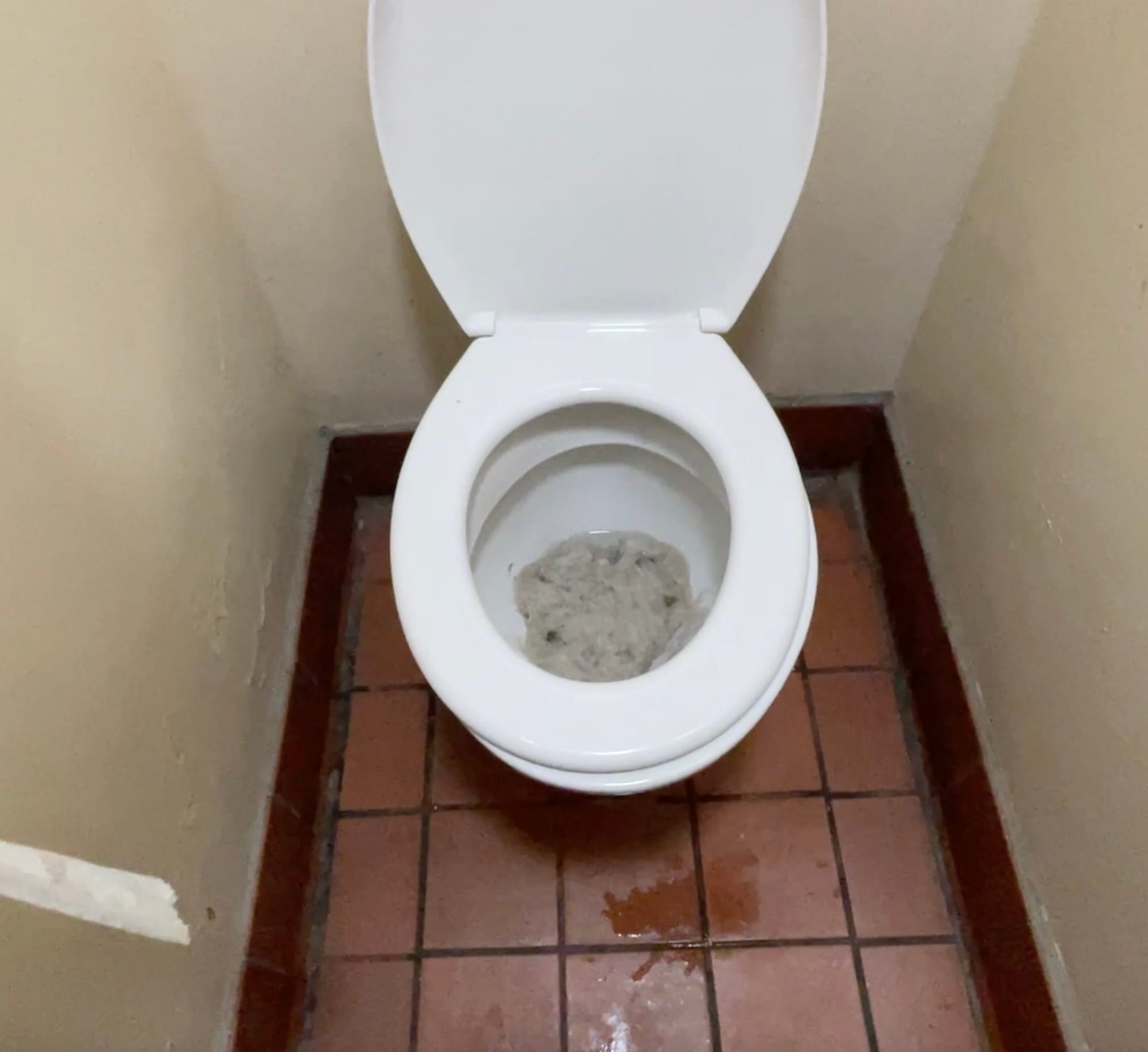
The ladies' toilets by Rye railway station. Photo: Rebecca Maer / Eastbourne Reporter
Some elderly women, just off a tour bus visiting Rye, wandered in and out of cubicles, openly shocked at the state of them.
We asked Rother District Council about these facilities.
It is paying Wetton Cleaning Services £927,593 of public money via a five-year contract until March 2027 to clean Rother public conveniences, according to council information (below).
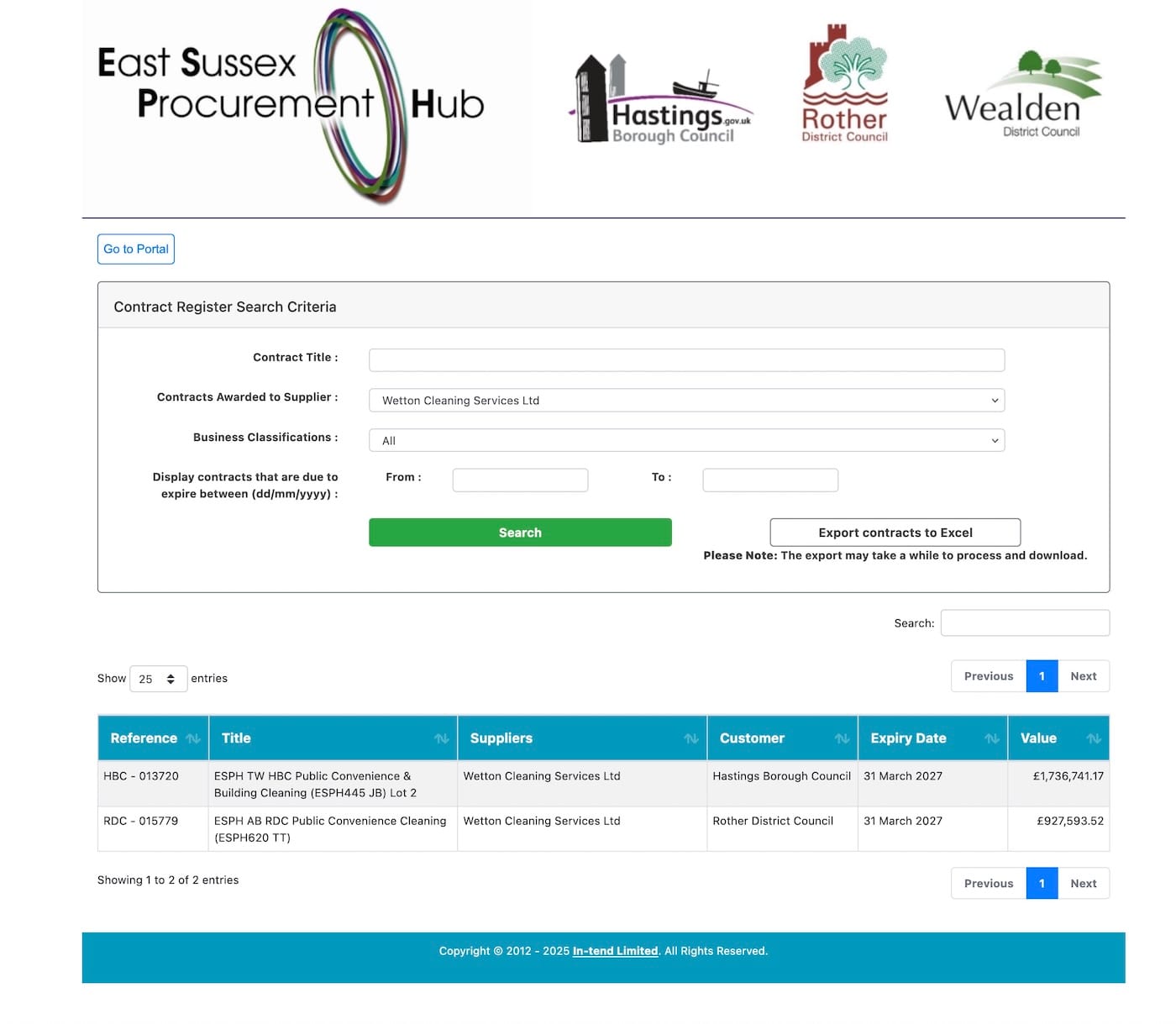
The council said: “There have been recurring issues with the men’s toilets at the Station Approach facilities, and previous repairs have unfortunately not been successful in providing a permanent fix.
“Maintenance work is due to start on the men’s toilets in the next few weeks to address this. The disabled toilet will be available for use while the men’s facilities are closed.”
I emailed again to ask what is being done about the appalling state of the ladies’ toilets and ask how the contract is monitored. I was sent a 30-page procurement process document which did not state how the contract was monitored.
I emailed again to ask how it was monitored. I await a response.
I also asked Wetton how often they cleaned these toilets. I await a response.
If you were driving, you would go straight to the modern, accessible, clean toilets at the nature reserve’s visitor centre or use the Rye Harbour village toilets, which Icklesham Parish Council maintains in a perfectly clean condition.
The nature reserve
The first impressions are of birdsong, breeze, shingle, sky, sand. It’s free to enter with wide, accessible paths to the ‘Discovery Centre’ and cafe with huge glass windows looking across the reserve.
It’s lovely. And it has hygienic toilets.
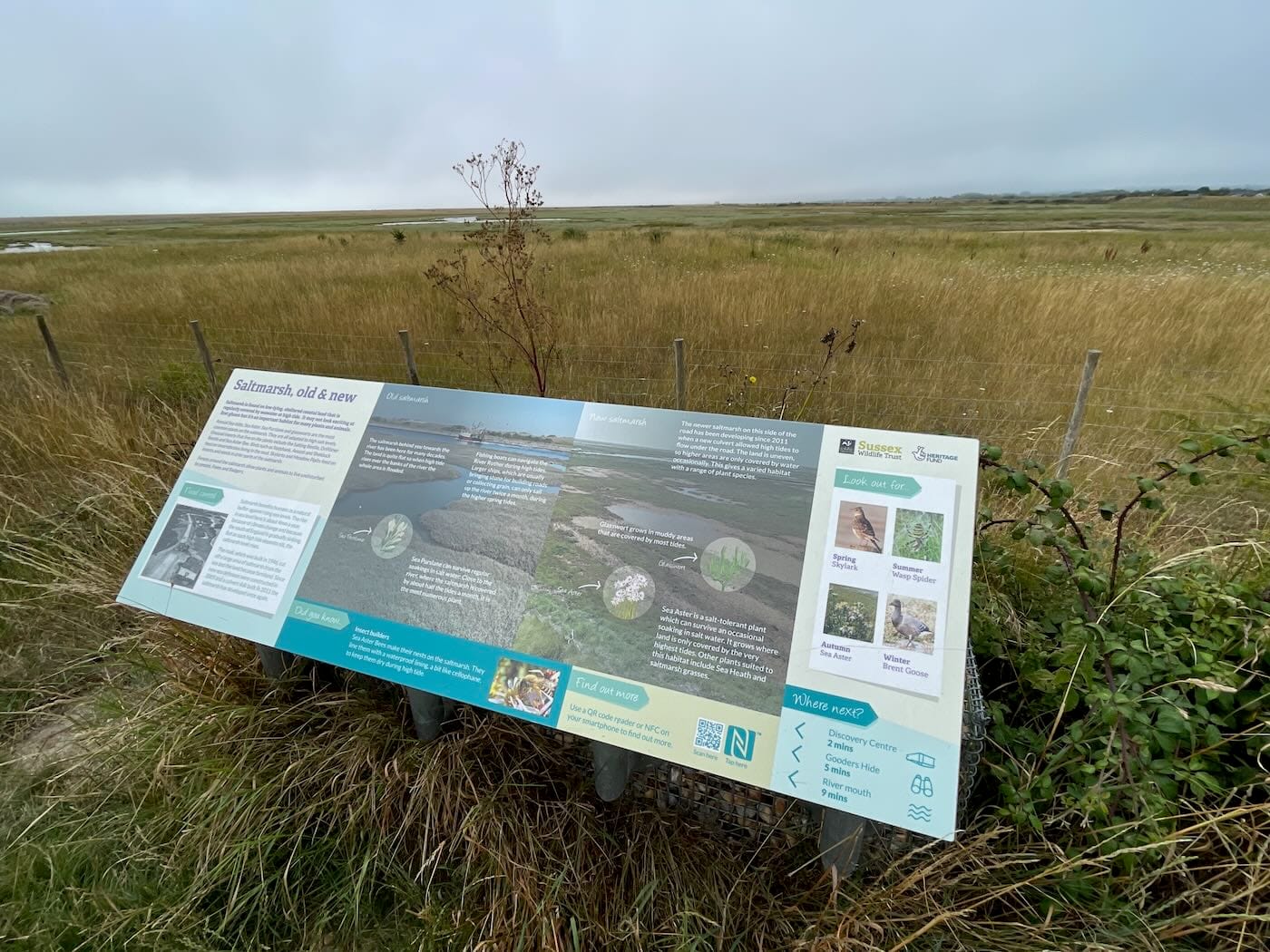
There are a couple of routes around the reserve, depending on your energy levels and time. We took the short trail of about two miles which loops around via the river mouth, taking in three bird hides.
There is a longer trail of about 5.5 miles which goes towards Camber Castle.
Sitting in a hide gives you a distinct Springwatch vibe and you can hear Chris Packham’s voice in your head (I could anyway...) rhapsodising about the shingle and wetland habitat.
Display boards help you identify cormorants, terns and dozens of other birds which nest safe from foxes and badgers, protected by electric fences.
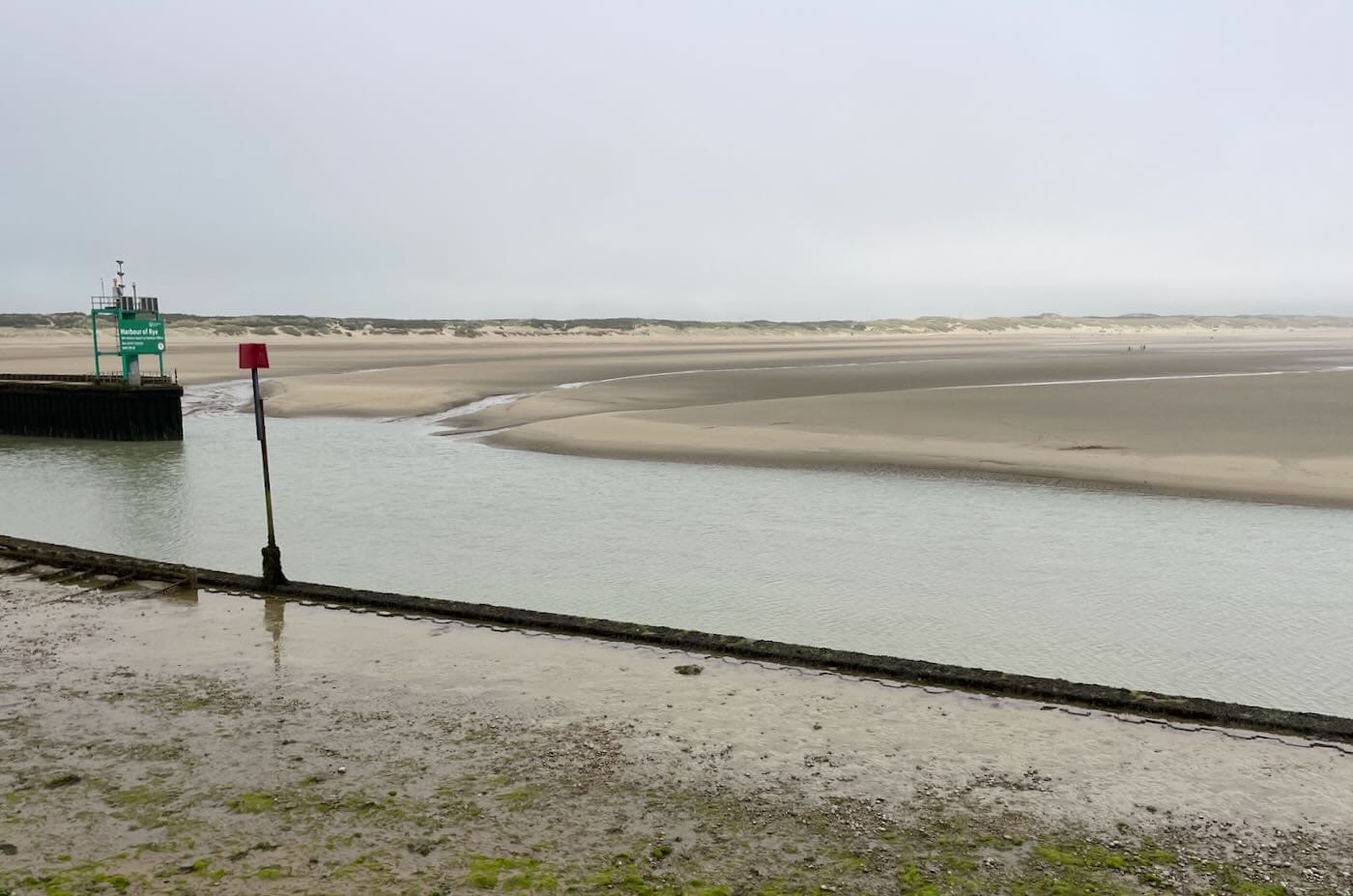
There is a bonus sweeping view of Camber Sands on the first part of the walk, which leads to the river mouth – and the bonus sight of glistening seals sliding in and out of the water.
The vast skyscape, huge curve of sand to the east and miles of shingle stretching west are the perfect antidote to staring at screens. Even though that's what you are doing to read this ...

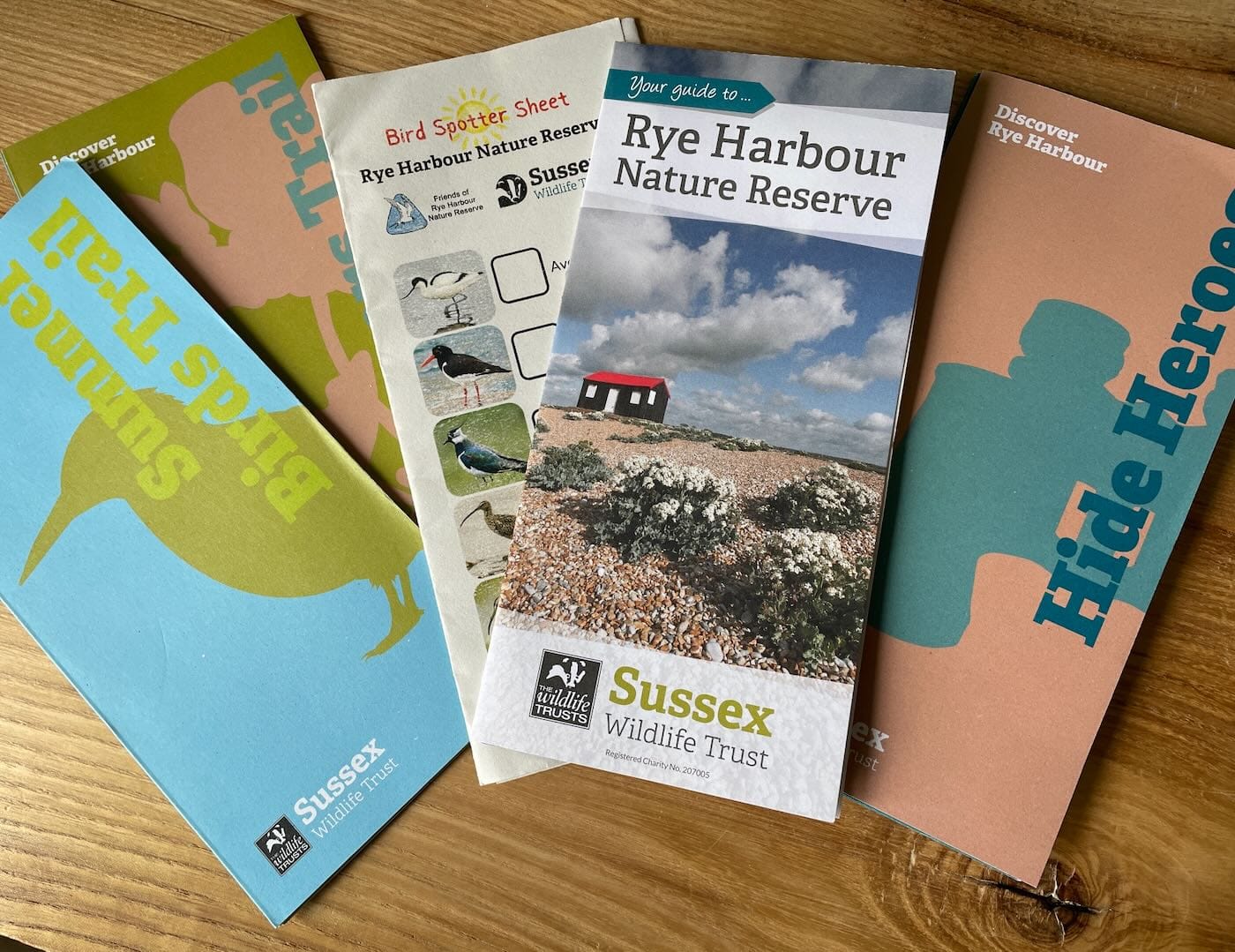
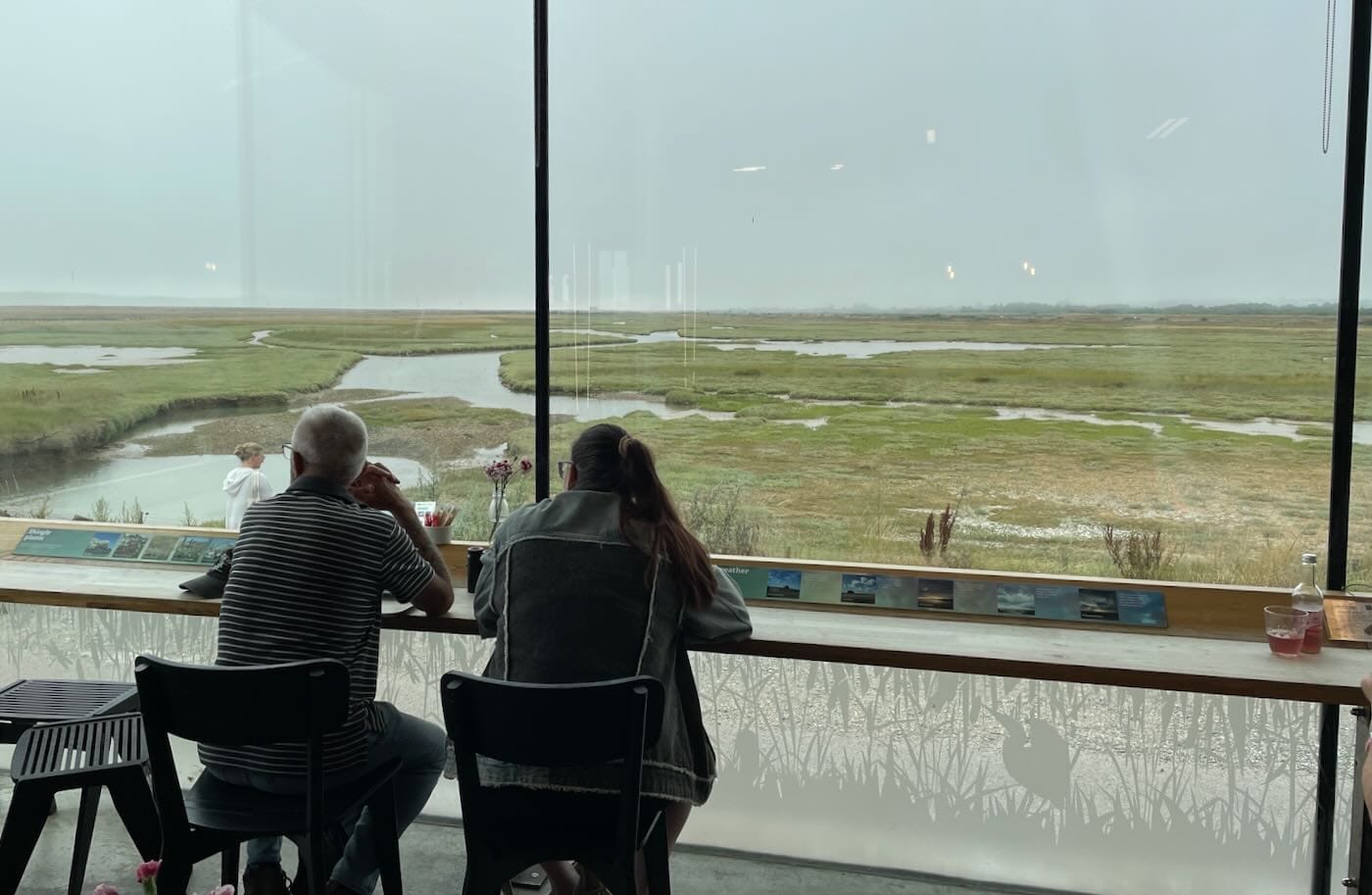
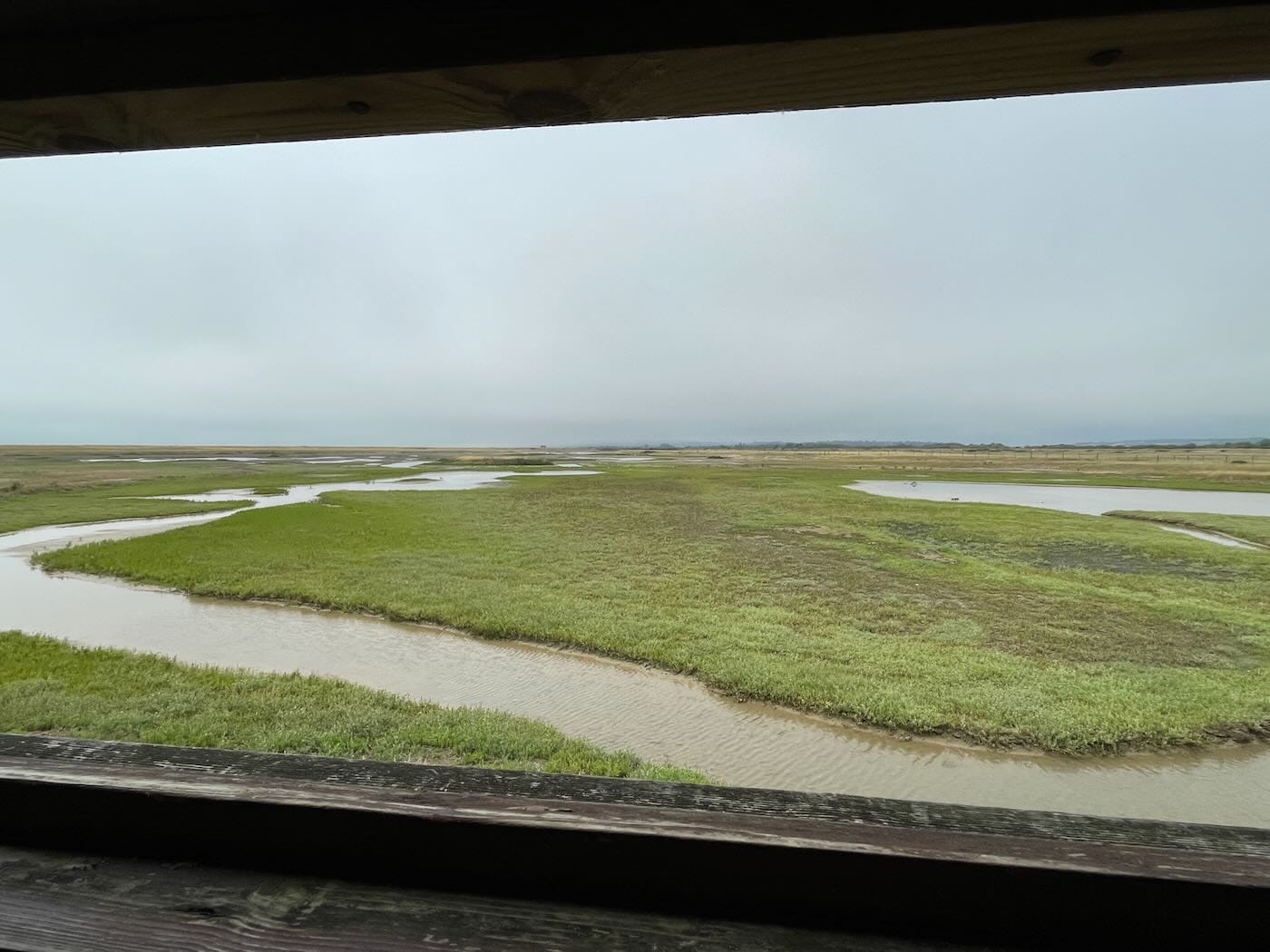
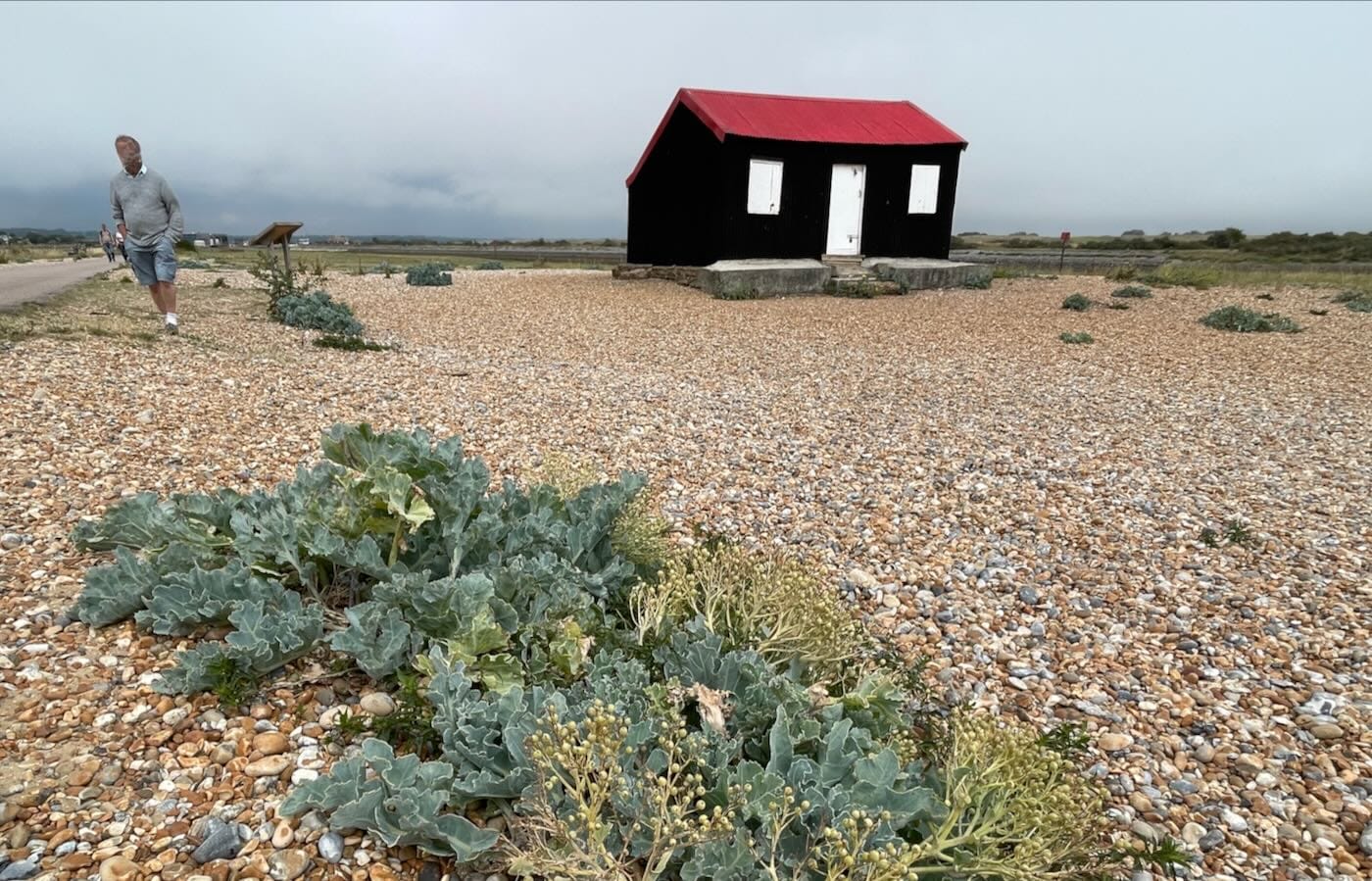
Photos: Rebecca Maer / Eastbourne Reporter
We took some lunch to eat in one of the hides while bird spotting but the Lime Kiln Cafe (top right) offers light lunches and cakes.
Getting home
We returned to the bus stop in the village in plenty of time to catch the 1410 bus back to the station. But the bus didn't arrive at 1410. We and several other passengers waited nearly an hour with no information on the Stagecoach app about what had happened to the 1410 service.
I rang the Stagecoach phone number, only to hear the message: "Stagecoach is closed." Mid-afternoon, mid-week?
We had to contact Stagecoach via X/Twitter, only to be told the Stagecoach phone line is closed every Thursday between 2pm and 3pm. Of course it is.
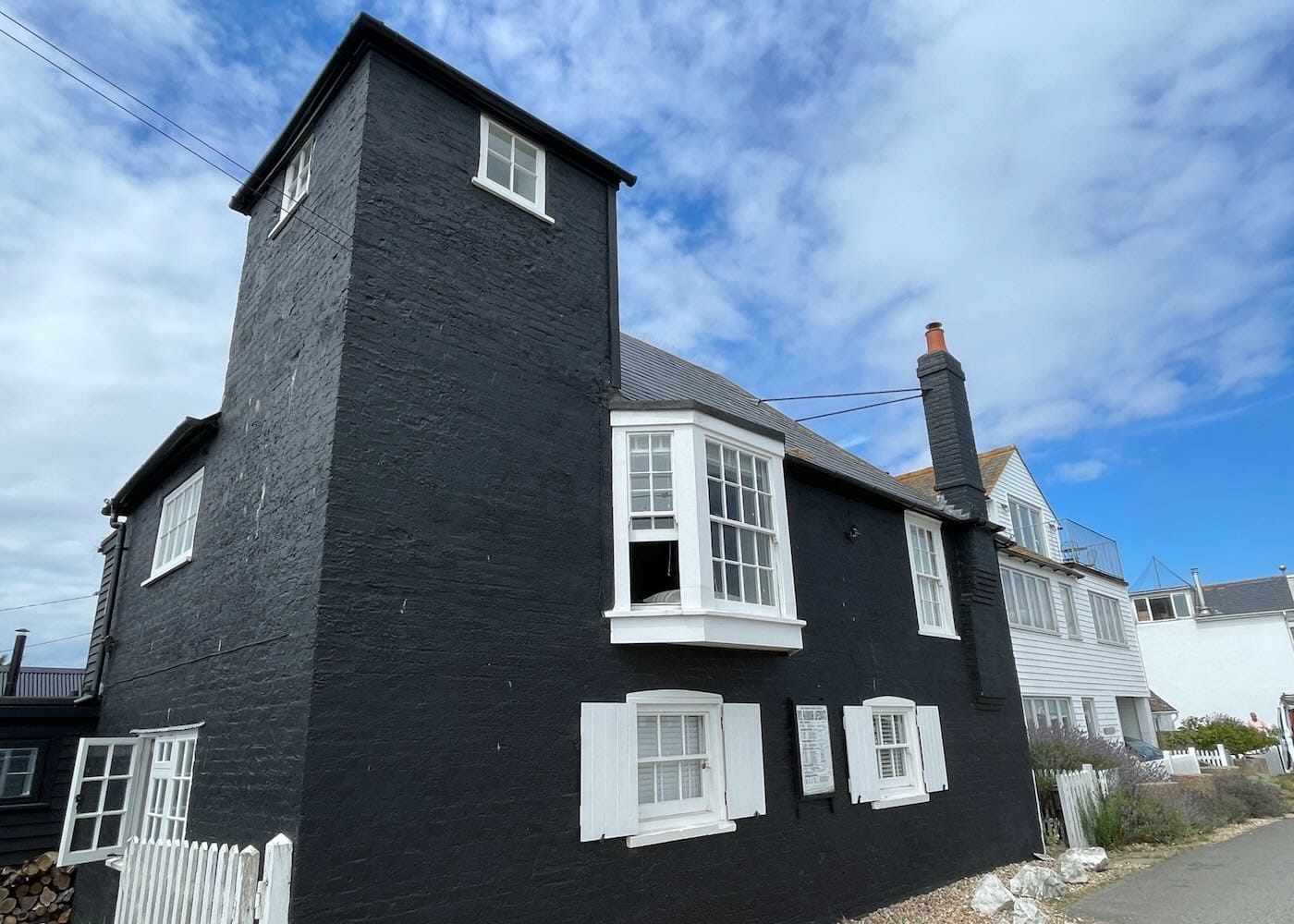

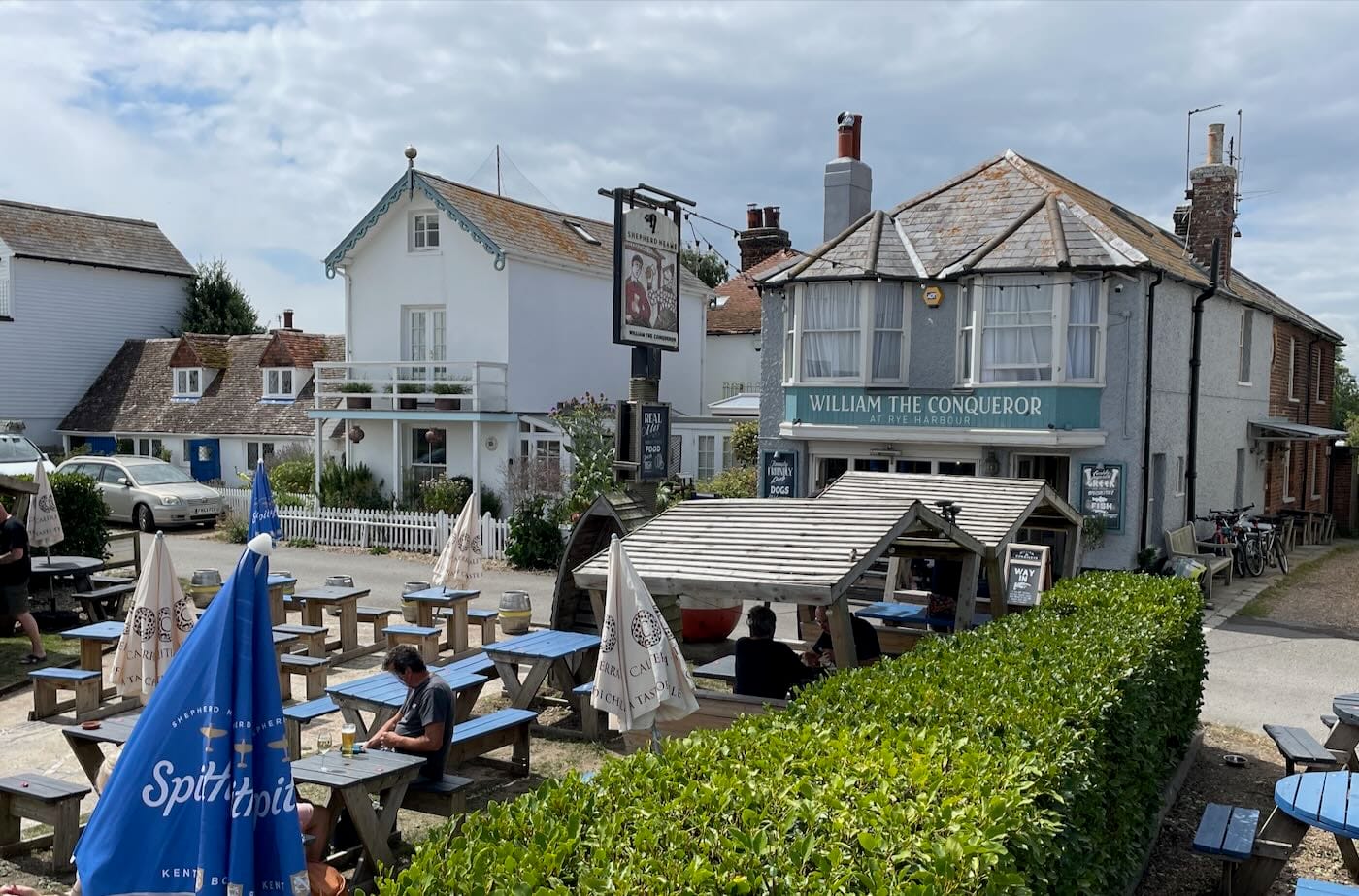
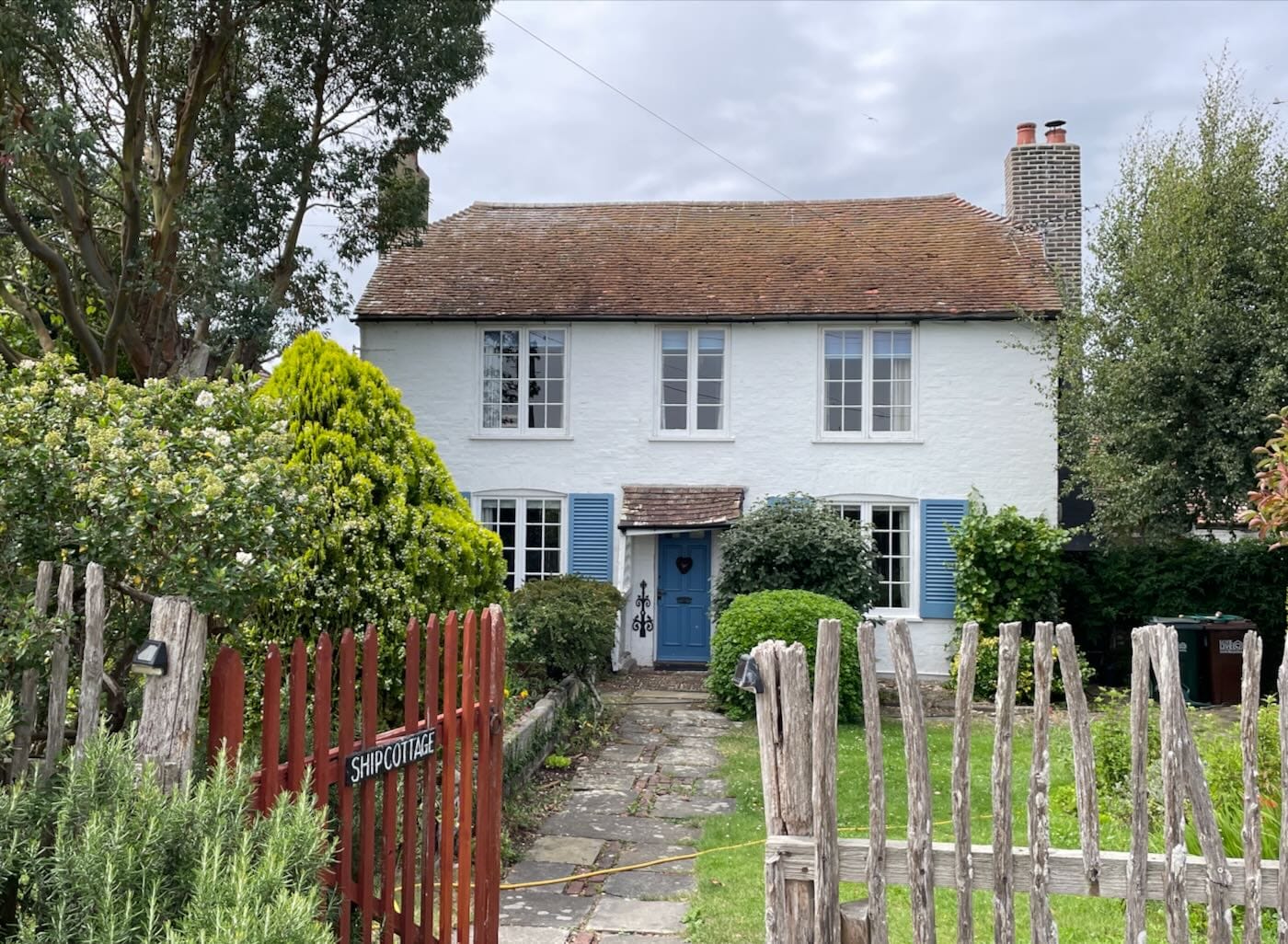
Rye Harbour Village, a picturesque place for a very long wait for the bus. Photos: Rebecca Maer / Eastbourne Reporter
A bus eventually appeared just before 3pm, nearly 45 minutes late. This was the delayed 1410 service rather than the next scheduled bus - the 1502 service - although we weren't to know that at the time. It meant we missed the 1448 train back to Eastbourne and had to wait until the 1548 service because Marshlink line trains from Ashford International to Eastbourne run only hourly.
We asked Stagecoach the following:
1. Why is the Stagecoach app lacking in information on delays / cancellations to live services. I have experienced this problem before in Eastbourne and complained to Stagecoach as a passenger. Nothing seems to change.
2. Why is a major transport company's phoneline, which the Twitter operator told us to use, regularly closed for an hour mid-afternoon, mid-week?
3. The Eastbourne Reporter interviewed Stagecoach South East managing director Joel Mitchell earlier this year here and he said that more people needed to use buses to make them viable. It took us three hours to get home, a journey which is about an hour by car. How can people be encouraged to travel more sustainably when this is what they face?
Stagecoach told us that the 313 operates on a two-hourly schedule in partnership with East Sussex County Council and is closely linked to the 312 route.
On the day of our visit, the previous bus arrived in Rye 45 minutes late, due to an earlier diversion so began the new journey about 40 minutes late.
“Road closures and diversions are the cause of a significant amount of delay and disruption to the bus industry. We’ve been working closely with our industry partners to try and reduce their impact,” a spokesperson said.
They said they were “continuously working to improve the performance and accuracy of our app”. Stagecoach will be giving new service updates via text, email, push notifications and WhatsApp to provide important travel information.
The phonelines are closed every Thursday between 2pm and 3pm to allow for staff training because this time "consistently sees the lowest volume of customer calls, providing the best opportunity for development while minimising inconvenience to passengers”.
Except, of course, for those who are stranded and calling Stagecoach.
There are worse places to be stuck for 45 minutes than picturesque Rye but, on a hot day and after a long day out, we wanted to get home.
And of the three coaches on the Southern train back to Eastbourne at 1548, at least one did not have functioning air-conditioning on a hot day.
Was the trip worth it?
For the nature reserve definitely, and for the views from the train, certainly. But a day out should not be marred by non-existent public transport information and revolting public facilities.
The cost of the journey for two people using public transport is nearly 40% higher (without a railcard) than going by car. There are combined train/bus tickets which might save on buses, but they are unclear and not widely promoted.
It’s no surprise there is a full car park at Rye Harbour – which is also free. There should be a shuttle bus between the nature reserve and the station to really encourage sustainable travel.
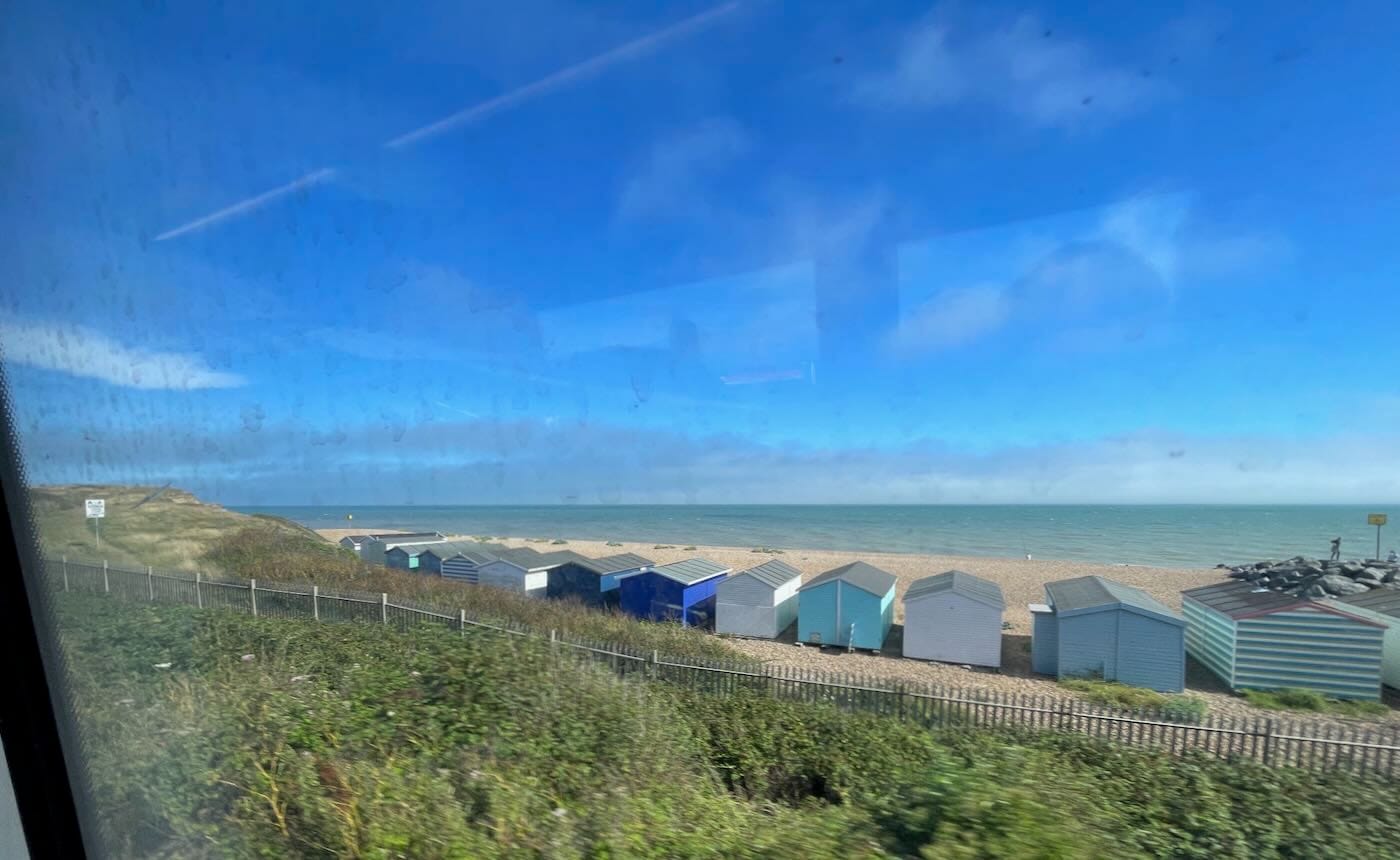
Although the train journey takes about the same time as driving, the extra time involved in waiting for buses means it takes twice as long as driving. And that’s even if they run on time.
In our case, taking three hours to get home from Rye is, frankly, bonkers. You can fly to Mallorca in that time – and the toilets are probably cleaner when you get there.
Total return travel time (door to door):
By train and bus: Five hours (normally four hours)
By car (AA route planner): Two hours approx
Cost:
By train for two people: £30.60 off-peak day return (£15.30 each: based on no railcard)
Rye buses: four single journeys @ £2 = £8 (return tickets not available)
Buses to and from Eastbourne station: four single journeys @ £2 = £8
Total by train: £46.60
Total by car (64-mile round trip): £28.80*
*based on HMRC rate of 45p per mile allowance, which includes all running costs
:: If you think this genuine review written by an experienced journalist is better than reading PR handouts presented as ‘news’, please support us – it’s free to read but not free to produce. One-off donations are here or become a member here for the price of a coffee just once a month. Reader support is vital for the survival of the Eastbourne Reporter as a trusted source of information.

